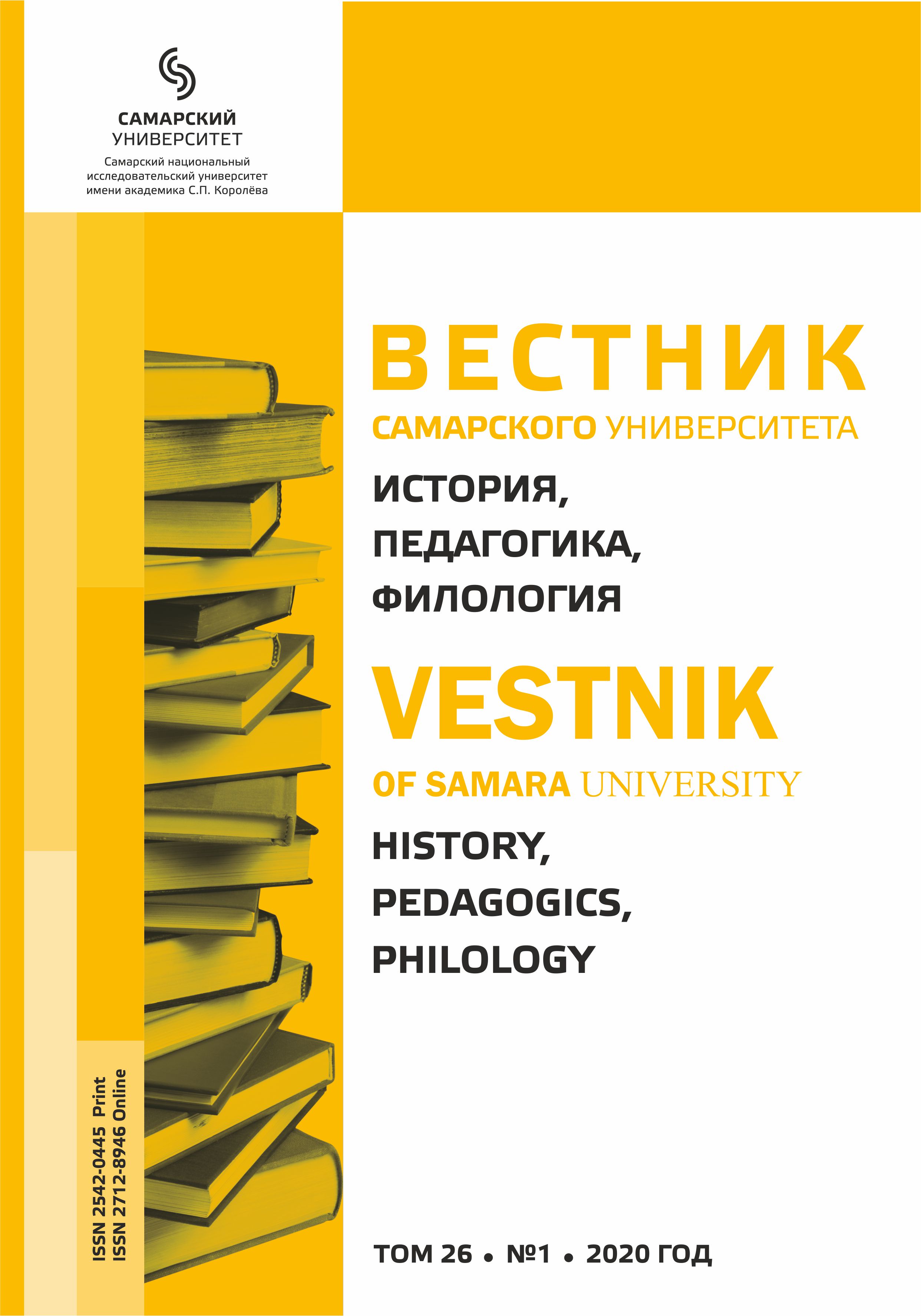The Problem of Denotation of Old High German ‘nesso’ in Charms
- Authors: Trufanova N.A.1
-
Affiliations:
- Lomonosov Moscow State University
- Issue: Vol 26, No 1 (2020)
- Pages: 134-140
- Section: Articles
- URL: https://journals.ssau.ru/hpp/article/view/7740
- DOI: https://doi.org/10.18287/2542-0445-2020-26-1-134-140
- ID: 7740
Cite item
Full Text
Abstract
This article focuses on the etymology of Old High German ‘nesso’ – a controversial lexeme used in the prominent for German studies charms („Pro nessia” and „Contra vermes“) as well as in a range of less examined literary works. She gives the background of this issue, systematizes the existing interpretations of this lexeme, analyzes their validity regarding modern data and supplements them with her own conclusions illustrating the mechanism of denotation. The methodological framework has been developed under the influence of Russian and foreign linguists, culturologists and specialists in charm literature; the variety of analyzed sources is reflected in references. The relevance of the study is justified by the growing interest in folklore genres among scholars and insufficient research work conducted on this matter in domestic science. Using methods of etymological analysis, she suggests new ways to interpret the lexeme: OHG ‘nesso’ < PGmc *net- ‘bind, coil’; PGmc *nata-, *nataz > OHG naz, nezzen, Germ. netzen ‘moisten’; OHG ‘nesso’ as a contraction of OHG nichessa ‘water ghost’, ‘water monster’. The research is based not only on the relevant sources of the German tradition, many of which appear in such a study for the first time, but also on some parallels found in Slavic folklore texts. Thus, from the author’s point of view, the disputed nature of ‘nesso’ could be revealed through examination of some particular Slavic charms against fever and whitlow. The author comes to the conclusion that Slavic and German prescientific notions of bacterial infections have a lot in common; the same is also true for the methods of their prevention and cure. The author hopes that the results of her research will help to close the gap in the declared problematics and contribute to the solution of the problem. The drawn conclusions will interest specialists in the field of history of the German language and literature as well as folkloristics and medicine of the Middle Ages.
About the authors
N. A. Trufanova
Lomonosov Moscow State University
Author for correspondence.
Email: morenov@ssau.ru
ORCID iD: 0000-0002-9707-6567
postgraduate student at the Faculty of Philology, Department of Germanic and Celtic Philology
References
- Dorow 1824 – Dorow W. (1824) Denkmäler alter Sprache und Kunst, in Zwei sächsische Beschwörungsformeln aus dem 9. Jahrhundert. Bd. 1, heft 2–3. Berlin, pp. 261–271.
- Eis 1964 – Eis G. (1964) Altdeutsche Zaubersprüche. Berlin, 182 p. DOI: http://dx.doi.org/10.1515/9783110817638.
- Grafenauer 1961 – Grafenauer I. (1961) Ein altpflanzerisch-chthonischer Wurmsegen in der Schweiz und in Slovenien, in Schweizerisches Archiv für Volkskunde. Bd. 57, pp. 148–152.
- Grimm 1844 – Grimm J. (1844) Deutsche Mythologie. 2 Ausgabe. Göttingen, p. 456. Available at: http://archive.org/details/deutschemytholo01grimgoog/mode/2up.
- Helm 1953 – Helm K. (1953) Altgermanische Religionsgeschichte. Berlin, 428 p. Available at: https://archive.org/details/in.ernet.dli.2015.340705/page/n3/mode/2up.
- Holzmann 2001 – Holzmann V. (2001) „Ich beswer dich wurm und wyrmin…“: Formen und Typen altdeutscher Zaubersprüche und Segen. Bern, 2001, 246 p. DOI: http://dx.doi.org/10.1017/S003871340009014X.
- Kerkhof 2018 – Kerkhof P.A. (2018) Worms, noise and nuisances ad nauseam. Leiden Medievalists Blog. Available at: http://leidenmedievalistsblog.nl/articles/worms-noise-and-nuisances-ad-nauseam.
- Kögel 1894 – Kögel R. (1894) Geschichte der deutschen Literatur bis zum Ausgang des Mittelalters. Strassburg, 652 p. Available at: https://archive.org/details/geschichtederdeu00ehriuoft/page/n6/mode/2up.
- Schulz 2003 – Schulz M. (2003) Beschwörungen im Mittelalter: Einführung und Überblick. Heidelberg, 184 p.
- Zittera 2014 – Zittera T.J. Magie und Mythologie: Der althochdeutsche Wurmsegen und die altisländische Überlieferung. Akademie Verlag, 159 p. Available at: http://docplayer.org/76872494-Diplomarbeit-titel-der-diplomarbeit-magie-und-mythologie-der-althochdeutsche-wurmsegen-und-die-altislaendische-ueberlieferung.html.
- Ivanov, Toporov 1974 – Ivanov V.V. and Toporov V.N. (1974) Research in the field of Slavic antiquities. Moscow, 342 p. (In Russ.) Available at: http://inslav.ru/publication/ivanov-vyach-vs-toporov-v-n-issledovaniya-v-oblasti-slavyanskih-drevnostey-m-1974.
- Mansvetov 1881 – Mansvetov I.D. (1881) Byzantine material for 12 tryasavicas’ legend. Drevnosti. Trudy Imp. Moskovskogo arkheologicheskogo obshchestva, vol. 9, issue 1, pp. 24–36 (In Russ.) Available at: https://www.icon-art.info/bibliogr_item.php?id=8323.
- Toporova 1996 – Toporova T.V. (1996) Language and style of Old German charms. Moscow, 214 p. (In Russ.)
- Trufanova 2018 – Trufanova N.A. (2018) The relicts of the myth about the fight of the Thunderer against the Serpent in Indo-European charms. Herald of Tver State University Series: Philology, no. 2, pp. 192–198. (In Russ.) Available at: http://eprints.tversu.ru/8122.
Supplementary files













